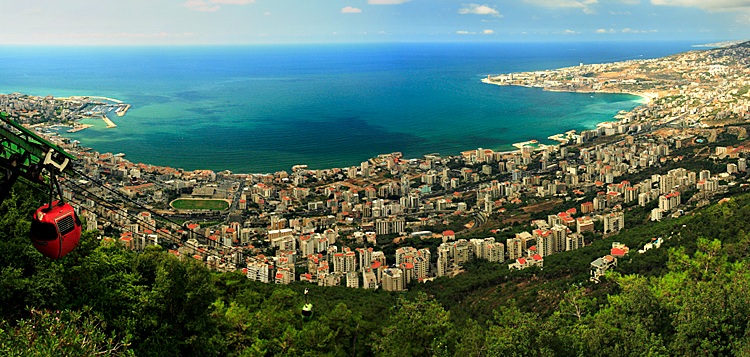
Lebanon's diverse patchwork of Mediterranean-lapped coast, rugged alpine peaks, and green fertile valleys is packed into a parcel of land some 225km long and 46km wide – an area approximately the size of Cyprus or Connecticut. An ancient land, Lebanon features in the writings of Homer and in the Old Testament. Its cities were major outposts and seaports in Phoenician and Roman times, just two of the great civilizations that touched this important Middle Eastern crossroads.
The cosmopolitan flair of modern-day Beirut, the gastronomic renown of the country's food and wine, and an educated and outward-looking population complement a country that is both traditional and progressive in outlook. For all the flavors of its storied past and rugged natural beauty, Lebanon is a well-kept tourist secret that begs exploration.
There are four main geographic regions in Lebanon, differentiated by topography and climate. From west to east, they include: the coastal plain, the Mount Lebanon Range, the Békaa Valley, and the Anti-Lebanon Range.
To visit Lebanon is to dispel preconceived notions that linger from a relatively short moment in a long, vivid, and fascinating history: drink in the energetic, urbane vibe of revitalized Beirut; explore a diverse and beautiful landscape that lends itself easily to an unforgettable (and largely untrammeled) multi-sport adventure; marvel at archaeological wonders that are windows into the cradle of civilization; and simply enjoy the welcome of a people who are naturally hospitable, friendly, and gregarious.
COUNTRY PROFILE
- Official Name : Republic of Lebanon
- Government Type : Parliamentary Republic
- Currency (Code) : Lebanease Pound (LBP)
- Independence : 22 November 1943
- Capital : Beirut
GEOGRAPHY
- Total Area : 10,400 sq.km.
- Location : Middle East (bordering the Mediterranean Sea, between Israel and Syria)
- Natural Resources : Limestone, Iron ore, Salt, Water-Surplus State in a Water-Deficit Region, Arable Land
- Climate : Mediterranean; mild to cool, wet winters with hot dry summers; Lebanon mountains experience heavy winter snows
DEMOGRAPHY
- Population : 21,803,000 (2019)
- Nationality : Lebanese(singular and plural)
- Languages : Arabic(Official), French, English, Armenian
- Life Expectancy at Birth : 75.5 (2017)
- Literacy Rate : 92.5% (Female 91.6% Male 93.4%) (2018)
- Ethnic Groups : Arab 95%, Armenian 4%, Others 1%
- Religions : Muslim 54%,(27% Sunni, 27% Shia), Christian 40.5% (includes 21% Maronite Catholic, 8% Greek Orthodox, 5% Greek Catholic, 6.5% other Christian), Druze 5.6%, very small numbers of Jews, Baha'is, Buddhists, Hindus, and Mormons
ECONOMY
- GDP (purchasing power party) : $85.16 billion (2016 est.)
- GDP (ppp) : $18,500 (2016 est.)
- GDP (official exchange rate) : $51.82 billion (2016 est.)
- Inflation Rate : -1% (2016 est.)
- Export : $3.108 billion (2016 est.)
- Exports Commodities : jewellery, base metals, chemicals, consumer goods, fruit and vegetables, tobacco, construction minerals, electric power machinery and switchgear, textile fibers, paper
- Export Partners : Saudi Arabia 12.1%, UAE 10.6%, Iraq 7.6%, Syria 7.1%, South Africa 6.6% (2015)
- Imports : $17.98 billion (2016 est.)
- Imports Commodities : petroleum products, cars, medicinal products, clothing, meat and live animals, consumer goods, paper, textile fabrics, tobacco, electrical machinery and equipment, chemicals
- Import Partners : China 11.5%, Italy 7.1%, Germany 6.8%, France 6%, US 5.7%, Russia 4.6%, Greece 4.4% (2015)
Source: CIA World fact book

